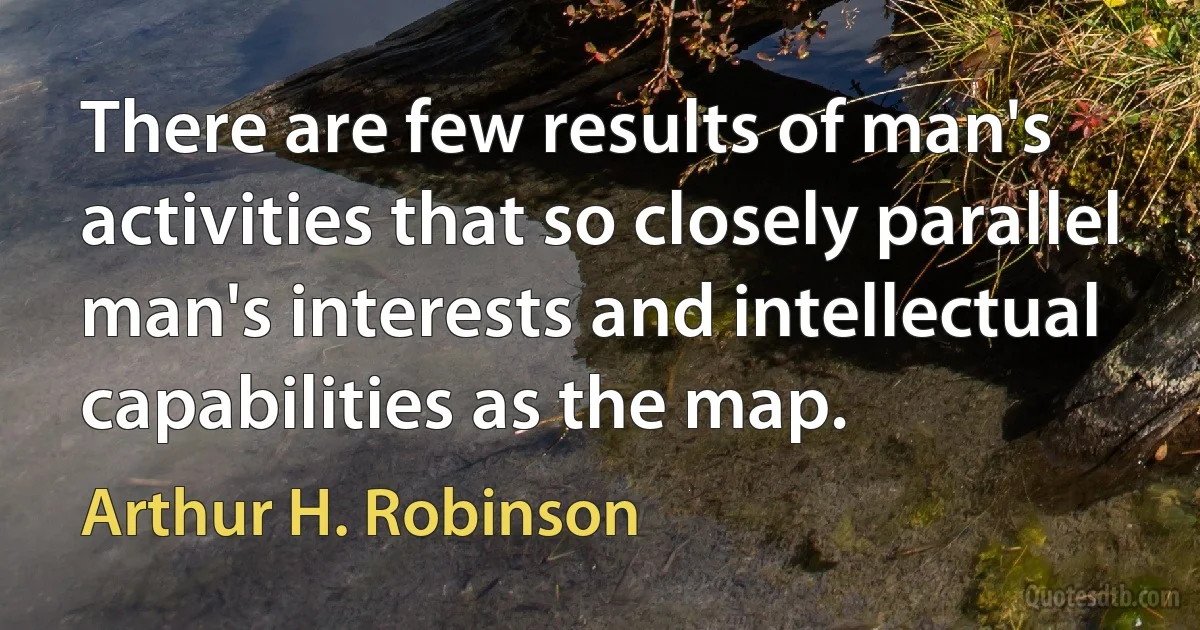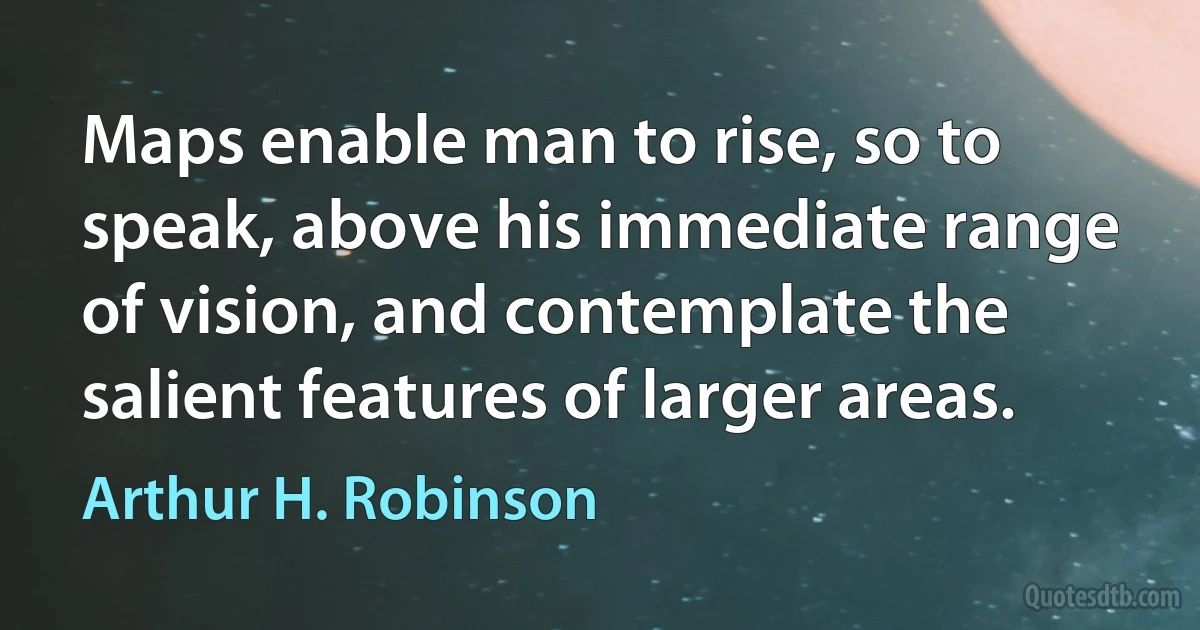Arthur H. Robinson quotes
The assumption that effective cartographic technique and its evaluation is based in part on some subjective artistic or aesthetic sense on the part of the cartographer and map reader is somewhat disconcerting. For example, E. Raisz claims that the "effective use of lines or colors requires artistic judgment,” and J. K. Wright explains that the suitability of a symbol "depends on the map maker's taste and sense of harmony.” Throughout the literature there are numerous similar assertions regarding the assumed subjective aesthetic and artistic content of cartography.

Arthur H. Robinson
There is also a considerable tendency to define the subject as a kind of meeting place of science and art. This is exemplified by Eckert. He pleads for artistic imagination and intuition in cartographic portrayal and claims that the inter-action of such talents with scientific geography produces the aesthetic map. There is no question about the importance of imagination and new ideas, but it is equally important that significant processes be objectively investigated, whether it be the visual consumption of a graphic technique or a process in geomorphology. It can perhaps best be approached by a comparison of the aims, techniques involved, and the results accomplished by each activity.

Arthur H. Robinson
The development of design principles based on objective visual tests, experience, and logic; the pursuit of research in the physiological and psychological effects of color; and investigations in perceptibility and readability in typography are being carried on in other fields... such a movement in cartography cannot fail to materialize.

Arthur H. Robinson
The author took the only course in cartography available to him in 1937; it must have been fairly typical of the few being offered in America: lectures based largely on personal experiences were supplemented by a relatively few assigned readings, and by Deetz and Adam's Elements of Map Projection.

Arthur H. Robinson
Take an orange and draw something on it -- say, a human face. Now carefully remove the peel, trying to keep it in one piece, and flatten it against your kitchen table. You'll see that in making a two-dimensional object out of a round one, something has to give. Either the face gets distorted and looks all 'mushed out,' or in flattening the peel, it breaks into segments, dividing the face as well into several parts. A cartographer chooses between a series of those kind of lesser-of-two-evils alternatives.

Arthur H. Robinson
I started with a kind of artistic approach... I visualized the best-looking shapes and sizes. I worked with the variables until it got to the point where, if I changed one of them, it didn't get any better... [only then I] figure out the mathematical formula to produce that effect.

Arthur H. Robinson


